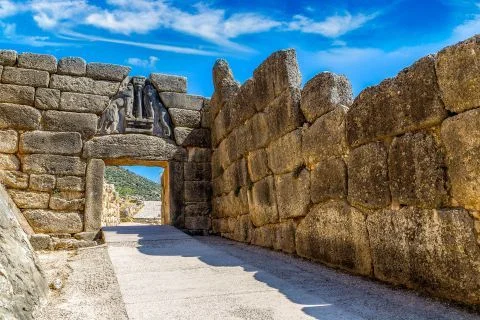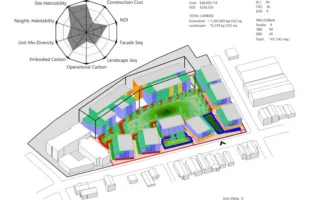Introduction:
Mycenaean architecture, characterized by its formidable citadels, impressive palaces, and monumental tombs, flourished during the Late Bronze Age in ancient Greece. The remnants of Mycenaean architectural marvels provide valuable insights into the engineering prowess and cultural achievements of this civilization. In this exploration, we unravel the distinctive traits of Mycenaean architecture by analyzing visual clues embedded within archaeological evidence.
1:The Legacy of Mycenaean Architecture: An Overview:
The Mycenaean civilization, which thrived from approximately 1600 to 1100 BCE, left behind a rich architectural legacy that continues to captivate historians and archaeologists. Mycenaean architecture is renowned for its massive stone structures, cyclopean masonry, and strategic hilltop fortifications, reflecting the militaristic and hierarchical nature of Mycenaean society.
2:Visual Clues in Mycenaean Architecture: Deciphering Traits:
To understand the traits of Mycenaean architecture, we must examine visual clues embedded within archaeological remains, such as the iconic Lion Gate at Mycenae, the majestic Treasury of Atreus, and the imposing walls of Tiryns. These structures offer valuable insights into the architectural techniques, artistic motifs, and symbolic meanings inherent in Mycenaean architecture.
3:Cyclopean Masonry:
The Building Blocks of Mycenaean Fortifications
One of the defining traits of Mycenaean architecture is the use of cyclopean masonry, characterized by massive, irregularly shaped stones fitted together without mortar. This construction technique, exemplified in the walls of Mycenae and Tiryns, not only provided formidable defense against invaders but also showcased the Mycenaeans’ mastery of stonecraft and engineering.
4:Megalithic Tombs: Commemorating the Mycenaean Elite:
Mycenaean architecture is also renowned for its monumental tombs, such as tholos tombs and chamber tombs, which served as final resting places for the elite members of society. The Treasury of Atreus, a spectacular tholos tomb at Mycenae, features a massive corbelled dome and a grand entrance adorned with decorative relief sculptures, symbolizing the wealth and power of its occupants.
5:Palace Complexes:
Centers of Mycenaean Power and Administration
At the heart of Mycenaean cities were palace complexes, which served as administrative centers, economic hubs, and royal residences. The palaces of Mycenae, Tiryns, and Pylos feature architectural elements such as central courtyards, megaron halls, and storerooms, reflecting the hierarchical organization and centralized authority of Mycenaean society.
6:Symbolism and Iconography: Interpreting Decorative Motifs:
In addition to their impressive scale and engineering ingenuity, Mycenaean structures were adorned with symbolic motifs and decorative elements that conveyed cultural, religious, and political meanings. The Lion Gate at Mycenae, with its iconic relief sculpture of two lions flanking a column, symbolizes royal power and protection, while the frescoes of Mycenaean palaces depict scenes of religious ceremonies, hunting expeditions, and mythological narratives.
Conclusion: Unraveling the Mysteries of Mycenaean Architecture
The study of Mycenaean architecture offers a window into the civilization’s achievements, beliefs, and aspirations. Through visual analysis of archaeological evidence, we can decipher the traits of Mycenaean architecture, from its imposing fortifications and monumental tombs to its ornate palaces and symbolic iconography. By unraveling the mysteries of Mycenaean architecture, we gain a deeper appreciation for the ingenuity and legacy of this ancient civilization.




